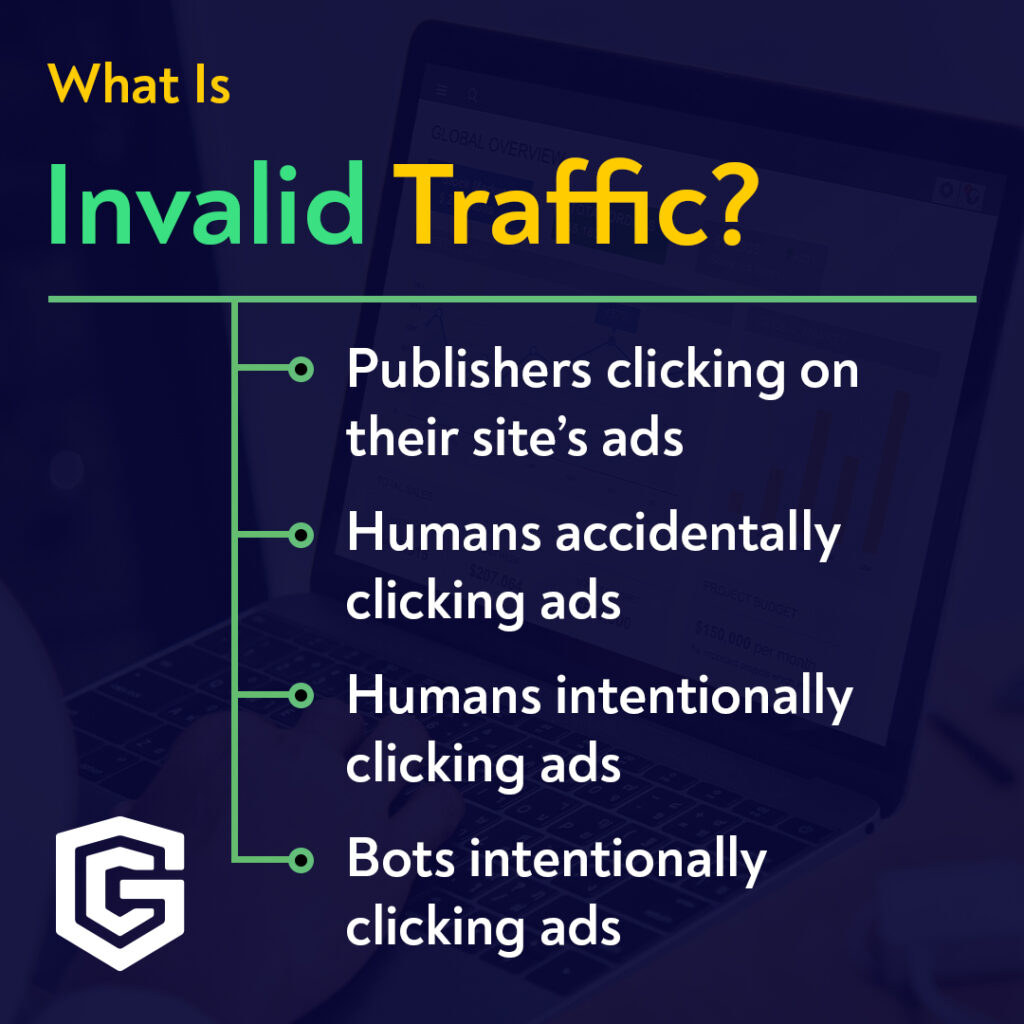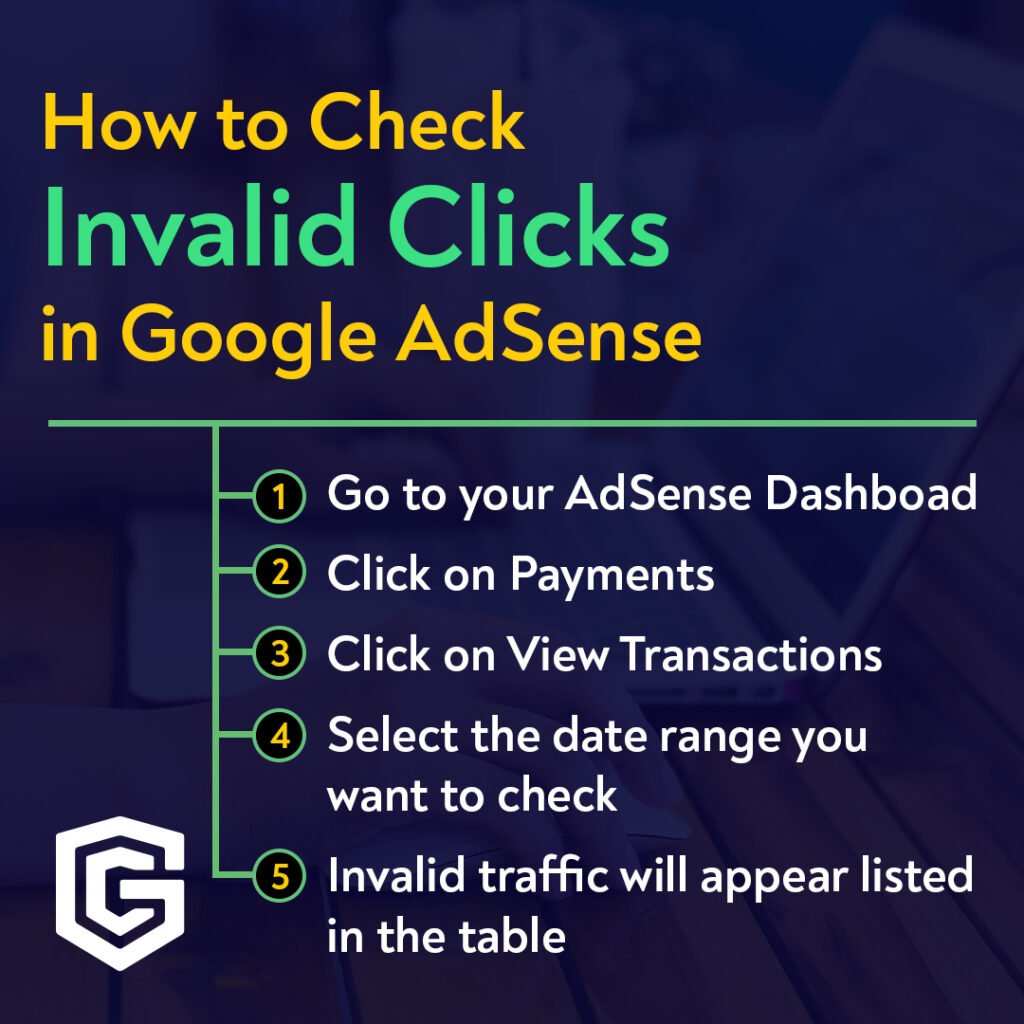Google Ads and AdSense are two of the most popular advertising platforms available today, providing businesses and publishers alike with the opportunity to reach a vast audience online. However, as with any advertising platform, there is always the risk of fraudulent activity and invalid clicks that can compromise the integrity of campaigns – and ultimately impact the bottom line.
Invalid and fraudulent clicks, in particular, have been a persistent problem for both advertisers and publishers using Google Ads and AdSense. These are clicks that are generated artificially rather than by genuine user interest, which can lead to inflated costs for advertisers and revenue losses for advertisers.
While Google has put in place measures to prevent invalid clicks, it is essential for advertisers and publishers to take proactive steps to protect their advertising investments.
In this article, we will guide you through how you can identify invalid clicks – both in Google Ads and AdSense – and share today’s best practices on how to prevent them from occurring in the first place. We will also explore the measures that Google has put in place to combat fraudulent activity.
First, let’s take a look at how to check for invalid clicks on Google Ads.
Invalid Clicks in Google Ads: What Are They and How to Stop Them
Invalid clicks and click fraud in Google Ads are a very real issue with a significant impact on digital advertisers. According to our research, 42% of all online traffic today is driven by bots and only 44% of impressions (or ads shown) across Google’s display advertising platforms are ever seen by a human.
Click fraud is more prevalent – and costly – than many of us realize. That is why is so important for advertisers to educate themselves about this issue and take precautionary measures to stop them from negatively impacting their ad campaigns.
So, what are invalid clicks?
Invalid clicks are any fraudulent activity that can affect your online advertising campaigns, particularly Pay-Per-Click (PPC) ads. Invalid clicks can also be harmless but wasteful traffic from clicks that are accidentally made by users, repeated clicks by the same user, or clicks from users with no real purchase intent.
On the other hand, there is also the more serious type of invalid clicks: click fraud. These are intentional clicks on your ads by competitors, publishers artificially inflating click revenue, or clicks generated by bots. Click fraud is therefore a far more malicious form of invalid clicks as it intentionally aims to exhaust your ad budget or manipulate your campaign’s performance data.
Ultimately, the big issue with this is that Google Ads are paid by clicks and impressions – so if a click doesn’t come from a real human who’s potentially interested in buying your product, it’s a wasted click.

Some of the more common causes of invalid traffic include (but are not limited to) the following:
- Clicks generated by publishers on the ads shown on their own sites (so that they can get better commissions)
- Accidental clicks on ads
- Intentional, repeated clicks performed by humans (usually in click farms, with the purpose of click fraud)
- Intentional, repeated clicks performed by bots and botnets with malicious intent
How Does Google Deal with Invalid Traffic?
Google has a few mechanisms in place that help them fight invalid traffic in Google AdSense
- Automatic Filters: Google has a system that checks for clicks coming from unusual IP addresses or from the same IP address multiple times. When these clicks are detected, they’re filtered out and aren’t counted as billable activity.
- Filtering in real-time: Google also uses real-time filters that stop suspicious clicks from being counted before they even have a chance to appear in your reports.
- Filtering in near real-time: Another system checks clicks for suspicious behavior and filters them out of your reports within a few hours.
- Manual Checks: In cases where unusual activity is detected, but the automatic filters didn’t catch it, the activity is sent to Google’s specialist team for manual review.
- Research and botnet hunting: A team of engineers and data scientists is dedicated to finding new ways to detect invalid traffic and botnets.
- Blocking suspicious accounts: If any accounts are found to be participating in fraudulent activity, they’re blocked.
Are Google’s mechanisms against Invalid Traffic helpful then?
To some degree, yes. But Google certainly does not catch all of them. Advertisers lose billions to invalid traffic every year – and these costs are expected to continue to grow exponentially to 100 billion US dollars by 2023.
The truth is that Google simply cannot keep up to speed with every fraudster or new click fraud methods targeting users across their entire ad network. And that’s exactly why advertisers also need to be involved in stopping invalid clicks in Google Ads themselves. To start with, let’s look at how advertisers can identify them.
Six signs to look out for when identifying click fraud:
- Sudden surges in clicks: If your ads receive several clicks in a short amount of time, it could be a sign of click fraud, especially if the visits are coming from the same IP address and from locations that are not part of your target area.
- Unusual peaks in impressions: A inexplicable rise in the number of impressions, i.e., the number of times your ad is shown, could be a sign of fraudulent activity. Your ad may be showing in the wrong placements or fraudulent websites.
- Low conversion rates: No conversions for high amounts of traffic may be a sign of click fraud, especially if the traffic is not human and cannot convert.
- Very high Click-Through Rate (CTR): Unusual click spikes can be spotted by looking at your CTR. You should put this metric into perspective with other metrics to identify if something is wrong.
- Low number of page views: Low engagement, despite high traffic, could indicate bot traffic.
- High bounce rates: A lack of interest in your content can be shown by high bounce rates. This could also be a sign of non-human traffic.
In addition to these six signs, there are a few other indicators of click fraud to be aware of:
- An unusual amount of time spent on site: Too little or too much time spent on a website can indicate a lack of engagement or bot activity.
- Lack of interactions: No interaction with the website after clicking on an ad can be a sign of bot traffic.
- Unusual IP addresses: Traffic coming in from outside of your targeted locations or from places where you have no activity may also be indicative of bot traffic.
- Bad ad placements: Suspicious-looking domain names and strange-looking applications may indicate fraudulent activity.
It is worth noting that if you do manage to identify fraudulent clicks on your Google Ads campaign, you can submit a Google Ads Refund Request – but keep in mind there is no guarantee you’ll get a refund. Furthermore, you will also have to do a lot digging through web logs and arrange data to make it easy for Google Ads’ investigators verify your claim. The number of claims you can make are also limited and can take more than six weeks to be processed.
You can read more about Google Ads Refunds in our extensive guide here.
How To Stop Invalid Clicks in Google Ads – The Manual Way
After you’ve identified unusual activity on your web logs that may indicate fraudulent or invalid clicks, you can manually block some of this traffic from reaching your ad campaigns.
Here is a step-by-step process on how to do this yourself:
Step #1: Find suspicious IP addresses
Despite having an invalid click detection filter, Google will still charge you for invalid clicks that slip under their radar. This means you should have your own invalid click detection system in place that audits the IP address of clicks on your ads.
One way to do this is to use your own IP tracker tools to audit IPs that pass Google’s filter. It’s not uncommon to find IPs that send constant traffic, but they don’t convert. As mentioned in our six signs to look out for, all the IPs that result in no conversion, have a high bounce rate, and spend minimal time on your site could be costing you money and therefore require investigation.
You can find IPs manually by looking at timestamp and user agent data – but this usually takes a lot of time, which is why it is best to use an IP tracking tool with an advanced algorithm built in.
Create a list of all the suspicious IP addresses and move to the next step.
Step #2: See who owns the IP addresses
This is where most advertisers go wrong: Not all the IP addresses that you think are fraudulent are actually fraudulent.
You should check which network who owns the IP address before you stop receiving traffic from it. Not all IPs that send heaps of traffic should be excluded. For instance, there are instances where large networks mask device behind proxy servers allowing them to use the same IP. It won’t be a good idea to exclude such IPs since they all may be completely unrelated to one another.
Here is what you should do:
Inspect the origin of the IP addresses you identified to see who owns the IP address. If it is a proxy server and searches from this IP are different and are naturally distributed, you can exclude the IP from your suspicious list as it’s likely not fraudulent – unless, of course, you see a clear pattern of abusive behavior.
Step #3: Exclude misbehaving IPs in AdWords
Finally, you’ll want to remove IP addresses from your Google Ads campaign that are engaged in fraudulent tactics. You can follow these steps to stop receiving traffic from these IP addresses.
- Visit your Google Ads account
- Click the Settings from the left sidebar and then click the Campaign
- Click Additional settings
- Click IP exclusions
- Enter IP addresses and click Save when done to block the IP addresses you just added
There you go! You won’t receive traffic from these IPs any longer.
Keep in mind:
IP exclusion is a continuous process and you should check for fraudulent IPs regularly. If your campaign is being targeted by a competitor; they might use many tools to change IPs on a regular basis. This can quickly turn into an endless game of cat and mouse, which is why it is best to have click fraud prevention and detection software to do the fighting for you.
How do you check for invalid Clicks on Google AdSense?
Google AdSense offers an opportunity for publishers to monetize their online content by displaying ads that are matched to their site’s content and audience. This matching process is done by AdSense, which analyzes the publisher’s website and the interests of the visitors to determine the most relevant ads to display. Advertisers create and pay for these ads, with the intention of promoting their products to potential customers.
One of the advantages of AdSense is that it allows publishers to focus on creating quality content while AdSense takes care of finding advertisers and displaying relevant ads. Additionally, AdSense offers a variety of ad formats, including display ads, text ads, and link units, which can be customized to match the look and feel of the website.
To participate in AdSense, publishers must apply to the program and meet certain eligibility criteria, such as having a website with unique and original content that complies with Google’s policies. Once approved, publishers can choose where on their website they would like to display ads, and AdSense will start serving relevant ads. Publishers earn money whenever visitors click on the ads, with the revenue split between the publisher and Google.
What about click fraud on AdSense?
Invalid traffic and click fraud aren’t limited to Google AdSense. They happen on virtually any kind of Google Ads campaign. But with Google AdSense, things get a little more complex because publishers are sometimes part of the problem.
On the one hand, Google AdSense publishers lie at the foundation of the entire AdSense ecosystem – and so, they play a huge part in how Google charges advertisers.
On the other hand, if publishers drive fake clicks on the AdSense ads they host on their site, it is the advertisers that suffer wasted ad spend. It is for this reason that Google has implemented a series of measures to prevent Invalid Traffic and chastise rogue publishers.
That being said, it is important to note publishers themselves can become victims of click fraud or invalid traffic. It could be a competing publisher driving false, irrelevant, or even bot-actioned clicks on your site. Or it could be too many readers erratically clicking on ads. Whatever it is, if you are a publisher and you want to make sure you don’t get suspended by Google, you will want to check invalid clicks in your Google AdSense account.

If you are a publisher, you can identify click fraud by following these steps:
- Go to your AdSense Dashboard.
- Click on Payments.
- Click on View Transactions.
- Select the date range you want to check.
- Invalid traffic will appear listed in the table.
AdSense Click Bombing – When Villains Become Victims
Google blocks AdSense accounts if they suspect unusual activity that might drive invalid traffic to the ads published through their program. As Google itself has stated, “Some publishers have had issues with invalid traffic when partnering with low-quality ad networks, search engines, or directory sites in efforts to increase traffic to their site.”
And yet, publishers can sometimes become victims of the villainous acts they’re accused of. AdSense click bombing is a type of click fraud that’s carried out against AdSense publishers. This is done by artificially inflating the number of clicks on ads shown on a publisher’s site to get them kicked out of the AdSense program.
What’s important here is that ad fraudsters don’t need to access your AdSense account to bomb your ads. They just need to click on them repeatedly – either manually (sometimes through click farms) or automatically (through bots and botnets).
As a publisher, there are some things you can do to prevent AdSense bombing. Some of the more common tips of advice include:
- Don’t click on your own ads. While this is unlikely to have a significant impact with a small amount of clicks, it is still against Google’s AdSense Policy.
- Don’t ask others to click on your ads. The same reasoning applies here, as encouraging readers to repeatedly click on your ads can get you removed as an AdSense publisher.
- Monitor your web traffic to identify fraudulent clicks.
The Best Way to Block Invalid Clicks in Google Ads
The simplest and most effective way to combat fraudulent traffic is by using click fraud protection software that can identify and block click fraud for you.
ClickGUARD is an essential tool for anyone running PPC ads as it protects your campaigns from unwanted clicks and wasteful traffic. By utilizing advanced algorithms to detect and prevent click fraud, bots, and other illegitimate clicks, it saves your ad budget for real, legitimate clicks that drive conversions.
In addition to eliminating unwanted clicks, ClickGUARD also provides detailed reports that give you insights into your campaign’s performance, helping you optimize your targeting and ad spend. Our latest version also comes equipped with fully automated features, making it easier than ever to manage your campaigns and focus on other aspects of your business.
Get Protected from Click Fraud Today
FAQ
What is click fraud and why is it an issue in Google Ads?
Click fraud refers to fraudulent activity in which clicks are generated artificially, rather than by genuine user interest, and it can lead to wasted ad spend for advertisers and revenue losses for publishers.
How can advertisers identify invalid clicks?
Advertisers can identify invalid clicks by looking out for sudden surges in clicks, unusual peaks in impressions, low conversion rates, very high Click-Through Rates (CTRs), and clicks originating from unusual IP addresses – or use software that does all this for them.
How does Google prevent invalid clicks in Google Ads?
Google prevents invalid clicks in Google Ads by using automatic filters, filtering in real-time, filtering in near real-time, manual checks, research and botnet hunting, and blocking suspicious accounts. But Google certainly does not catch all invalid clicks.
What are the consequences of invalid clicks for publishers?
Google blocks AdSense accounts if they suspect unusual activity that might drive invalid traffic to the ads published through their program. This means that invalid clicks for publishers can not only lead to revenue loss, but also AdSense account termination.
What is the best way to block invalid clicks in Google Ads?
The simplest and most effective way to combat fraudulent traffic is by using click fraud protection software that can identify and block click fraud for you, such as ClickGUARD.



